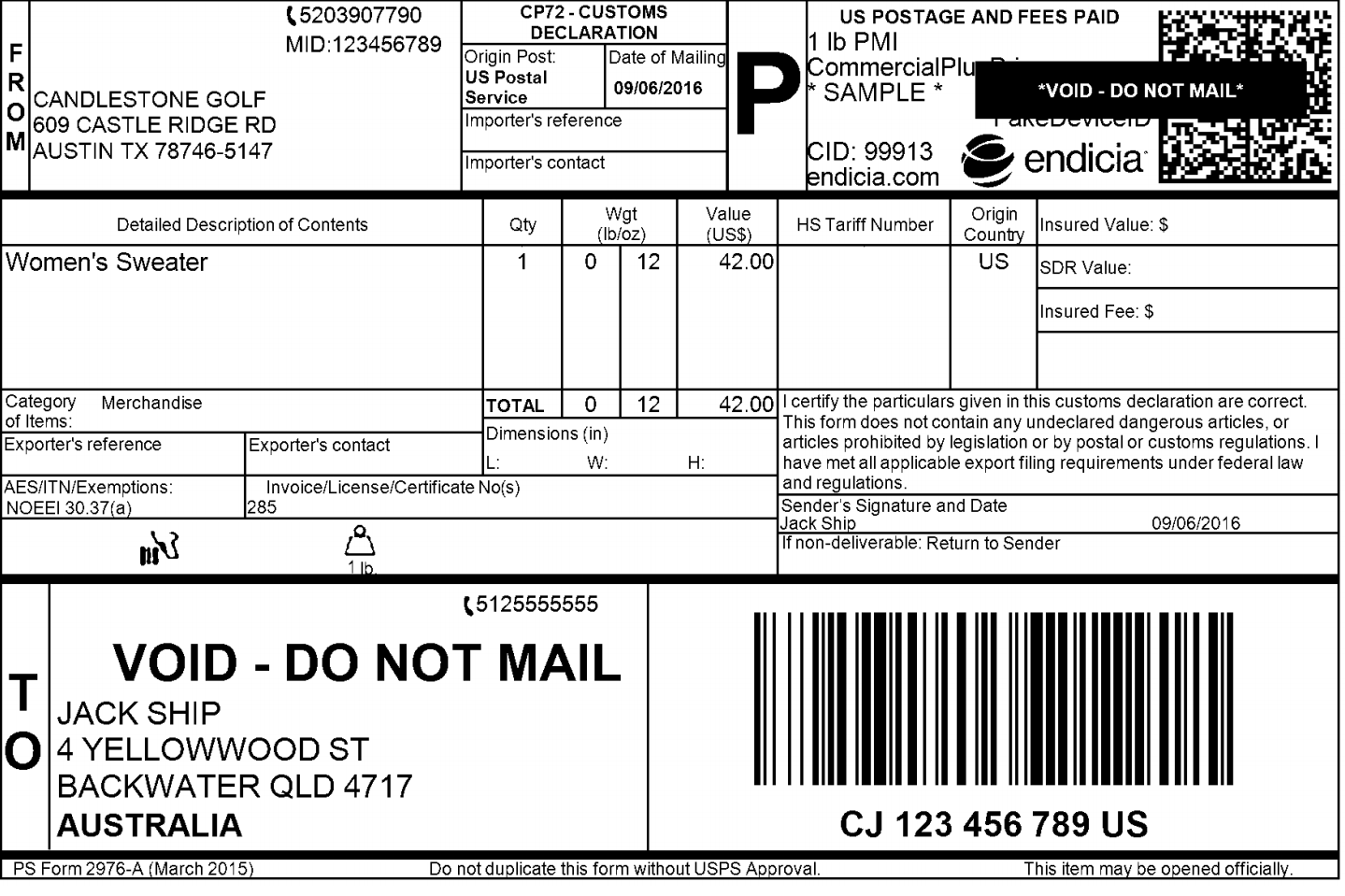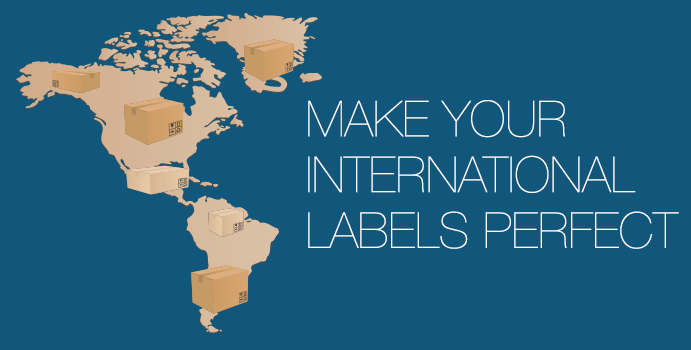International shipping is a bit of an enigma in that it’s very simple and easy to do, yet with so many strict rules, things can go wrong — which can cause headaches. In this post, we’re going to go over five tips for properly formatting the address on an international label to make sure every international shipment arrives at its final destination quickly with no delays or errors.

1. Know the 4 main sections of an international address, and get each of them right
The international address is made up of 4 sections: name, street address, city/province/postal code, and country. Each of these 4 sections has specific rules and requirements that if not met can invalidate your label and even prevent delivery.
Surprise! The 4 sections make up the remaining 4 tips.
2. The name should be the recipient’s actual name
While not always required to have first/middle/last, getting the full name of the recipient that follows what is on their government issued ID for the country they live in will greatly increase the likelihood of them receiving their package. Sending and even receiving internationally shipped orders to a name that sounds fake or has no relation to the destination address can cause suspicion at that country’s customs office or post office.
Your customer may have to pick up the shipment from the customs office. Making sure the name matches their ID, simplifies pick-up!
One thing to note as well: if the address also contains a company name, it may be added to the recipient’s name on the label. There are character limits per address line and in order to meet those requirements, some information may be combined.
3. Getting the address right
The second section of an international label is for the street address of the recipient. If the recipient’s address has an apartment or suite number for Address Line 2, your label will go from 4 lines to 5 lines.
Different carriers, countries, and shipping apps have their own rules for address length so the entire address fits on the label. For example, in ShippingEasy, there is a 27 character limit for USPS International shipments on these two lines. So, if your recipient’s address is long, try shortening things like West to W and Street to St.
4. City, Postal Code, and the important Province
This part is important, as many people leave off the Province for the country they’re sending a package to. While not required by all countries, it helps that country’s local post office make the final delivery. One more way to shorten delivery time!
Countries that definitely require a province on the address: USA (states), Canada, Australia (states), Brazil, Japan. There is a great chance your package won’t make it if you don’t include the province for these countries.
Bonus tip: if this address line is too long, recognize that the province may have an abbreviation. For example, “New South Wales” in Australia should be entered as “NSW” and “Nova Scotia” in Canada should be entered as “NS”.
Similarly, not all countries have postal codes – but most carriers require them anyway. When you come across an address that doesn’t have a postal code, but your shipping app is asking for one, just enter zeros.
5. Final line of destination country, some points to remember
Just putting the country seems simple enough; unfortunately, there’s room for errors, but your shipping app should abide by these rules so you don’t have to remember them.
Listed out, make sure that:
- Country is bold
- Country is UPPERCASE
- Use the country’s full name (don’t abbreviate)
- Don’t misspell the country’s name
- Make sure it’s on the last line
Getting any one of these wrong can actually invalidate the address.
Conclusion
While this might seem too simple for some, missing even one piece of the international address puzzle can invalidate a package and cause a timely shipment to be greatly delayed, resulting in lower customer satisfaction. Get your label right the first time and you’ll feel like international shipping is just as easy as domestic.
A quick reference cheat sheet list:
- Name + Company
- Use recipient’s full name based on government ID
- Address
- Know the character limits of your carrier and shipping app
- Shorten where possible. North to N, and Street to St, etc.
- City, Province, Postal Code
- Include the province when possible. It is required for many countries (and not always called a province)
- Abbreviate the province when required
- Country
- Bold, UPPERCASE, no abbreviations, don’t misspell, always on the last line
Rob Zaleski
Latest posts by Rob Zaleski (see all)
- USPS 2023 Shipping Rate Changes - November 16, 2023
